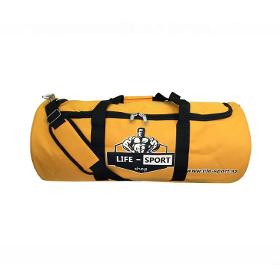- europages
- >
- COMPANIES - SUPPLIERS - SERVICE PROVIDERS
- >
- bulk material
Results for
Bulk material - Import export
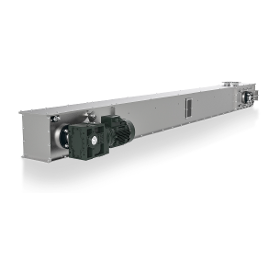
MAKENAS GRAIN MILLING TECHNOLOGY
Turkey
It is used mainly to convey all types of bulk material in the food industry,
Request for a quote
POLYGONMACH MAKINE SANAYI VE TICARET LTD STI
Turkey
Ship loading and bulk material handling plants: what are they? Plants for handling bulk materials and loading ships are made to load different kinds of bulk materials onto ships quickly and safely. These materials may consist of fertilizers grains ores coal and other goods that are shipped in containers. Conveyor belts hoppers and loading spouts are examples of the specialized machinery used by ship loading plants to move bulk materials from processing or storage areas onto the ships. However a variety of bulk materials can be handled in industrial settings like mines power plants and manufacturing facilities by bulk material handling plants. These facilities store move and process bulk materials in huge quantities using conveyor systems stackers reclaimers and other equipment. The logistics and supply chain management of the industries involved in the transportation of bulk materials depend heavily on the smooth operation of ship loading and bulk material handling facilities.
Request for a quote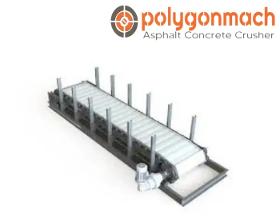
POLYGONMACH MAKINE SANAYI VE TICARET LTD STI
Turkey
An apron feeder is a crane, hardwearing, specialized bulk material handling machine found in the industries mentioned above. Apron feeders contain series of overlapping heavy steel pans or plates that are mounted upon high-powered chains. The chains pull the material along the feeder, therefore conveying the material from one point to the other. Apron Feeders are designed for a wide variety of materials, from large rocks down to ores and other very abrasive materials that may prove problematic for other feeder types. The difference in an apron feeder from the other types of feeders can be seen in its well-built design and the capability to endure heavy impact, besides intense abrasion, typically experienced in heavy industrial applications. They run at a regulated speed, delivering a constant flow of material to the downstream process equipment such as crushers, screens, and conveyors—important for ensuring that the overall processing system operates at optimum efficiency and producti
Request for a quote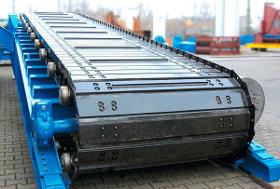
NOVELTY STEEL
Turkey
Apron feeders come in varying widths, ranging from 0.6 to 3.0 meters, and lengths spanning from 2.4 to 30.5 meters. Lengths exceeding 4.6 meters are primarily used for material conveyance rather than being an integral part of the feeder. Apron feeders exhibit capacities ranging from 91 to 2,270 tons per hour. The power requirements for apron feeders are approximately twice as high as those for comparable belt feeders. Apron feeders are typically employed in situations involving truck dumps or other scenarios where very coarse materials are handled, such as in the feeding of primary or secondary crushers. When an apron feeder is intended for use under a truck dump hopper with an elongated hopper opening, it’s essential to design the hopper with a taper that widens in the direction of horizontal flow for belt feeders. Novelty Structures supplies various types of feeders such as; * Apron Feeders * Belt Feeders * Rotary Table Feeders * Screw Feeders
Request for a quote
NOVELTY STEEL
Turkey
Bulk storage silos made of steel are the perfect solution to store the dry bulk material for a long time. The cylindrical shape and the conical bottom allow a complete discharge of the product. The flat bottom silo has a flat service which means it can gives a full support to the silo. This type of silo is used for both short-term and long-term storage of free flowing bulk materials. On the other hand hopper silos are used for the short or /medium term storage of free flowing materials. Compared to flat bottom silos, hopper silos have capacity shortcomings. Our modern steelwork fabrication shops have computer-aided design and detailing (CAD), which is linked directly to factory floor computer numerically controlled (CNC) machinery, creating a genuine seamless CAD/CAM environment. The accuracy of the computer-generated details being transmitted directly to the CNC machinery increases the quality standards of the production.
Request for a quote
POLYGONMACH MAKINE SANAYI VE TICARET LTD STI
Turkey
Apron Feeder: An Integral Component in Bulk Material Handling An apron feeder is a crane, hardwearing, specialized bulk material handling machine found in the industries mentioned above. Apron feeders contain series of overlapping heavy steel pans or plates that are mounted upon high-powered chains. The chains pull the material along the feeder, therefore conveying the material from one point to the other. Apron Feeders are designed for a wide variety of materials, from large rocks down to ores and other very abrasive materials that may prove problematic for other feeder types. The difference in an apron feeder from the other types of feeders can be seen in its well-built design and the capability to endure heavy impact, besides intense abrasion, typically experienced in heavy industrial applications. They run at a regulated speed, delivering a constant flow of material to the downstream process equipment such as crushers
Request for a quote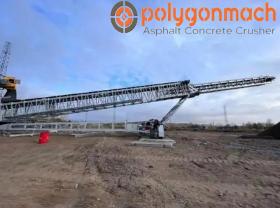
POLYGONMACH MAKINE SANAYI VE TICARET LTD STI
Turkey
Ship loading and bulk material handling plants: what are they? Plants for handling bulk materials and loading ships are made to load different kinds of bulk materials onto ships quickly and safely. These materials may consist of fertilizers grains ores coal and other goods that are shipped in containers. Conveyor belts hoppers and loading spouts are examples of the specialized machinery used by ship loading plants to move bulk materials from processing or storage areas onto the ships. However a variety of bulk materials can be handled in industrial settings like mines power plants and manufacturing facilities by bulk material handling plants. These facilities store move and process bulk materials in huge quantities using conveyor systems stackers reclaimers and other equipment. The logistics and supply chain management of the industries involved in the transportation of bulk materials depend heavily on the smooth operation of ship loading and bulk material handling facilities.
Request for a quote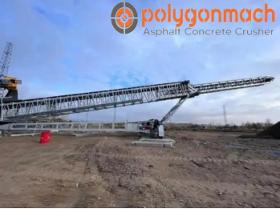
POLYGONMACH MAKINE SANAYI VE TICARET LTD STI
Turkey
A specialized conveyor system called a telescopic radial stacker is used in material handling applications to stack bulk materials in radial stockpiles with efficiency. This equipment has an extendable and retractable telescopic boom that expands its reach and facilitates radial or circular material stacking. By utilizing the radial stacking feature the stacker can maximize storage capacity in a constrained footprint by forming stockpiles with a larger diameter.Effective bulk material management and storage is achieved through the widespread use of telescopic radial stackers in the mining construction and aggregate processing industries.
Request for a quote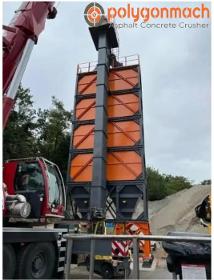
POLYGONMACH MAKINE SANAYI VE TICARET LTD STI
Turkey
A twin bucket chain elevator can be described as a specially designed vertical conveyor system whereby it can transport bulk materials, such as grains, sand, ore, coal, and others that are granular or in powdered states. Consider this kind of elevator with two parallel chains or belts fitted with a series of buckets running in a continuous loop. In operation, the elevator scoops up material at the lower end with its buckets and transports it to the top for discharge. This mechanism ensures an effective and controlled way of moving large quantities of bulk materials vertically. These elevators find wide applications in industries where bulk material handling is a crucial aspect of the operation, like in agriculture, mining, construction, and manufacturing. This system comes into its own in applications that involve dependable, continuous material flow between various levels in a facility.
Request for a quote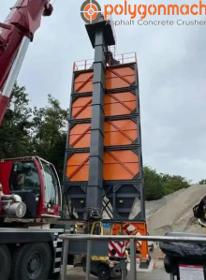
POLYGONMACH MAKINE SANAYI VE TICARET LTD STI
Turkey
What is a Twin Bucket Chain Elevator? A twin bucket chain elevator can be described as a specially designed vertical conveyor system whereby it can transport bulk materials, such as grains, sand, ore, coal, and others that are granular or in powdered states. Consider this kind of elevator with two parallel chains or belts fitted with a series of buckets running in a continuous loop. In operation, the elevator scoops up material at the lower end with its buckets and transports it to the top for discharge. This mechanism ensures an effective and controlled way of moving large quantities of bulk materials vertically. These elevators find wide applications in industries where bulk material handling is a crucial aspect of the operation, like in agriculture, mining, construction, and manufacturing. This system comes into its own in applications that involve dependable, continuous material flow between various levels in a facility.
Request for a quote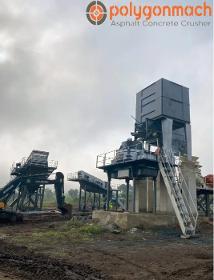
POLYGONMACH MAKINE SANAYI VE TICARET LTD STI
Turkey
A Stonebox Hopper is a kind of storage container that is frequently used to store and move bulk materials including stones aggregates and other hard materials in the mining quarrying and construction industries. These hoppers are made especially to efficiently handle abrasive and heavy materials. The word Stonebox suggests that it is ideal for working with heavy rough stones or comparable materials. For the materials kept inside of them to cause impact and abrasion stonebox hoppers are usually built with a sturdy construction. Their role in overseeing the handling of bulk material storage and transportation in industrial processes is crucial. In real-world settings Stonebox Hoppers serve as a loading and storing unit for the orderly transfer of materials onto conveyors or downstream processing machinery. A consistent flow of materials is ensured onto the conveyor system for additional handling by the features built into these hoppers that make loading and unloading easier.
Request for a quote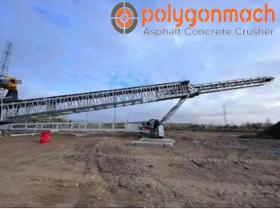
POLYGONMACH MAKINE SANAYI VE TICARET LTD STI
Turkey
A Telescopic Radial Conveyor Belt Radial Stacker is a specialized equipment used in material handling applications to efficiently stack bulk materials in radial patterns. This equipment combines the functionalities of a telescopic conveyor belt and a radial stacker to offer enhanced flexibility and efficiency in material stacking operations. The telescopic feature allows the conveyor belt to extend or retract, enabling it to reach varying distances for stacking materials, while the radial stacking capability enables the creation of organized radial stockpiles of bulk materials. By integrating telescopic and radial functionalities, this equipment optimizes material stacking processes and enhances storage capacity within a limited space footprint. The operational principle of a Telescopic Radial Conveyor Belt Radial Stacker involves extending the telescopic conveyor belt to reach the desired stacking location and efficiently conveying materials to create radial stockpiles.
Request for a quote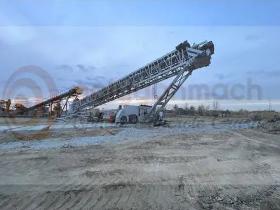
POLYGONMACH MAKINE SANAYI VE TICARET LTD STI
Turkey
A Telescopic Radial Conveyor Belt Radial Stacker is a specialized equipment used in material handling applications to efficiently stack bulk materials in radial patterns. This equipment combines the functionalities of a telescopic conveyor belt and a radial stacker to offer enhanced flexibility and efficiency in material stacking operations. The telescopic feature allows the conveyor belt to extend or retract, enabling it to reach varying distances for stacking materials, while the radial stacking capability enables the creation of organized radial stockpiles of bulk materials. By integrating telescopic and radial functionalities, this equipment optimizes material stacking processes and enhances storage capacity within a limited space footprint. The operational principle of a Telescopic Radial Conveyor Belt Radial Stacker involves extending the telescopic conveyor belt to reach the desired stacking location and efficiently conveying materials to create radial stockpiles.
Request for a quote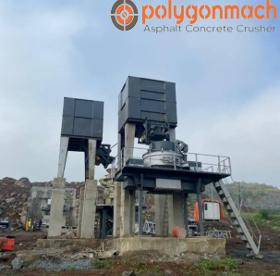
POLYGONMACH MAKINE SANAYI VE TICARET LTD STI
Turkey
A Stonebox Hopper is a kind of storage container that is frequently used to store and move bulk materials including stones aggregates and other hard materials in the mining quarrying and construction industries. These hoppers are made especially to efficiently handle abrasive and heavy materials. The word Stonebox suggests that it is ideal for working with heavy rough stones or comparable materials. For the materials kept inside of them to cause impact and abrasion stonebox hoppers are usually built with a sturdy construction. Their role in overseeing the handling of bulk material storage and transportation in industrial processes is crucial. In real-world settings Stonebox Hoppers serve as a loading and storing unit for the orderly transfer of materials onto conveyors or downstream processing machinery. A consistent flow of materials is ensured onto the conveyor system for additional handling by the features built into these hoppers that make loading and unloading easier.
Request for a quote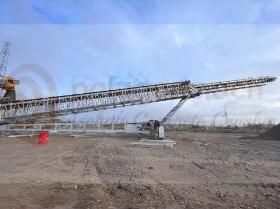
POLYGONMACH MAKINE SANAYI VE TICARET LTD STI
Turkey
A specialized conveyor system called a telescopic radial stacker is used in material handling applications to stack bulk materials in radial stockpiles with efficiency. This equipment has an extendable and retractable telescopic boom that expands its reach and facilitates radial or circular material stacking. By utilizing the radial stacking feature the stacker can maximize storage capacity in a constrained footprint by forming stockpiles with a larger diameter.Effective bulk material management and storage is achieved through the widespread use of telescopic radial stackers in the mining construction and aggregate processing industries. To work the telescopic radial stacker extends its boom to the desired stacking area. From there materials are dispersed radially along the booms length. An even distribution of materials is created in a circular stockpile as the materials leave the conveyor belt because the stacker rotates around a central pivot point.
Request for a quote
POLYGONMACH MAKINE SANAYI VE TICARET LTD STI
Turkey
A Bolted Segment Kitset Cement Silo and Mineral Silo is a certain form of storage specially meant for bulk materials such as cement, fly ash, lime, and a variety of mineral types. The silos are made out of bolted segments that are prefabricated metal panels assembled at a site to form a robust and durable storage unit. The silo design allows for easy transportation, assembly within the shortest time possible, and also has capacity flexibility. Hence, these silos, due to their ease of transport, quick assembly, and flexibility in capacity, are ideal for many industrial applications. The kitset design enables the silo parts to be delivered for easier transportation to remote locations or sites with poor access. Bolted segment silos are widely employed in construction industries, mining operations, and manufacturing plants because of their versatile and reliable nature.
Request for a quoteDo you sell or make similar products?
Sign up to europages and have your products listed
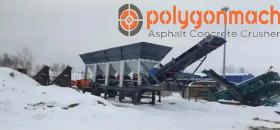
POLYGONMACH MAKINE SANAYI VE TICARET LTD STI
Turkey
In industrial environments a combination feeding hopper and dosing belt conveyor is a frequently utilized system for regulated material feeding and dosage. Before raw materials or bulk materials are fed onto the belt conveyor they are first stored in the feeding hopper. In order to enable accurate material distribution and consistent dosing it guarantees a constant and continuous supply of materials to the dosing belt conveyor. Transporting and dosing materials at a regulated rate however is the job of the dosing belt conveyor. The technology is appropriate for batching mixing or processing operations that call for precise material dosing because it can control the conveyor belts speed and capacity to precisely dispense the required quantity of materials. Materials are loaded into the feeding hopper which then transfers the materials to the dosing belt conveyor as part of the feeding hopper and dosing belt conveyor system.
Request for a quote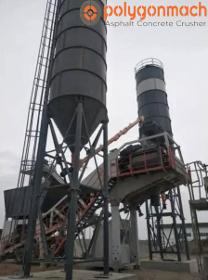
POLYGONMACH MAKINE SANAYI VE TICARET LTD STI
Turkey
A 150-ton bolted type cement silo is a specially manufactured storage container for holding in the range of 150 tons of bulk cement or any other powder materials that are applied in construction purposes and industries. These silos are an integral part of the entire batching plant, construction, or manufacturing facility, where large quantities of cement should be maintained safely but ready and available to be used in the manufacturing process at any time. Made of durable materials, such as steel, the 150-tonne cement silo provides a safe and sturdy storage facility for bulk materials, thereby ensuring the quality and integrity of any material being stored. A 150-ton silo can hold huge volumes of cement on-site to contribute to the continuous production of concrete, construction, or manufacturing activities as required.
Request for a quote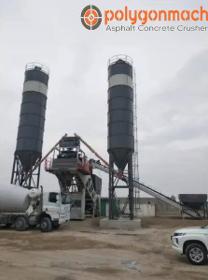
POLYGONMACH MAKINE SANAYI VE TICARET LTD STI
Turkey
A 50-ton bolted-type cement silo is an industrial storage container designed for the storage of up to fifty tons of bulk cement or other powdered materials utilized in building and industrial operations. These silos form very important units in concrete batching plants both at construction sites and in manufacturing units, where bulk storage of cement is required for production processes. The bolted type construction of these silos allows them to be assembled and dismantled with a fair degree of ease, thereby offering a lot of flexibility in terms of their installation and, if necessary, their relocations. The 50-ton silo, made with hard-wearing materials, such as steel, offers safe storage of bulk materials against perishity from moisture, contamination, and other environmental factors that deteriorate the quality of materials. The 50-ton bolted type cement silo works with the bulk cement loaded into the silo through an inlet port at the top, after which it waits for the end use.
Request for a quote
POLYGONMACH MAKINE SANAYI VE TICARET LTD STI
Turkey
A Bolted Segment Kitset Cement Silo and Mineral Silo is a certain form of storage specially meant for bulk materials such as cement, fly ash, lime, and a variety of mineral types. The silos are made out of bolted segments that are prefabricated metal panels assembled at a site to form a robust and durable storage unit. The silo design allows for easy transportation, assembly within the shortest time possible, and also has capacity flexibility. Hence, these silos, due to their ease of transport, quick assembly, and flexibility in capacity, are ideal for many industrial applications. The kitset design enables the silo parts to be delivered for easier transportation to remote locations or sites with poor access. Bolted segment silos are widely employed in construction industries, mining operations, and manufacturing plants because of their versatile and reliable nature.
Request for a quote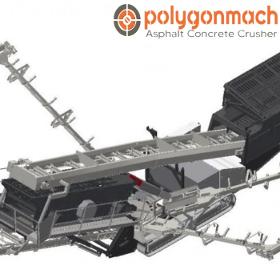
POLYGONMACH MAKINE SANAYI VE TICARET LTD STI
Turkey
A track stacker is versatile, mobile equipment mainly utilized in the bulk material handling industry. With their tracked ability to move, these stackers are designed to move and stack materials such as soil, sand, aggregates, and other bulk goods. They find their most important applications in operations that call for efficient stockpiling and accurate placement in large quantities. Their tracked mobility enables them to operate in areas that might not be accessible for conventional wheeled stackers; hence, they become ideal for mining, construction, and recycling sites. These machines can deal not only with huge volumes of materials at higher speeds but the precision with which they work makes them very critical in the workflow in order to optimize storage and processing space.
Request for a quote
KAYADERELI CONSTRUCTION
Turkey
It is a mold plaster used in shaping ceramics and ceramics.
Request for a quote
KAYADERELI CONSTRUCTION
Turkey
Joint tape at plasterboard joints used with. It makes the application surface smooth. It does not crack in the joints. It has high adhesion. It is economical.
Request for a quote
KAYADERELI CONSTRUCTION
Turkey
EPS, XPS, composite sheet, plasterboard and rock internal thermal insulation fast adhesion in applications provides the opportunity. It is economical.
Request for a quote
KAYADERELI CONSTRUCTION
Turkey
Ideal for detail work. It is aesthetic. It is economical.
Request for a quote
KAYADERELI CONSTRUCTION
Turkey
Surface preparation; Before starting the application, the surface should be cleaned of dust and anti-adhesive substances. The smoothness and mechanical health of the application surface should be checked. Application; The appropriate consistency of the mortar is 25 kg of joint filler in 5-7 liters of water. With a low-speed mixer, the joint filler is mixed into clean water for 3-5 minutes so that no lumps remain. The mortar, which is left to rest for 5 minutes, is mixed again for a short time and becomes ready for use.
Request for a quote
KAYADERELI CONSTRUCTION
Turkey
Makes the surface ready for paint, saves paint. Oz does not. It is aesthetic. It is economical
Request for a quote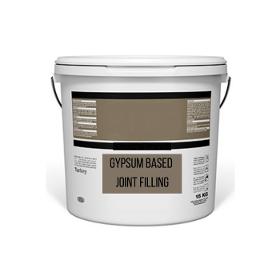
KAYADERELI CONSTRUCTION
Turkey
INSTRUCTION MANUAL 1- First, water is poured into a clean container. 2- 10 kg to approximately 4.8- 5.0 kg of water PLASTER BASED SPECIAL PURPOSE JOINT FILLER is added. 3- Mix for 3 minutes with 60 seconds of sipping and 60 seconds of waiting. 4- The molds and materials to be used must be clean. 5- Before completing the setting time, the amount mixed in the container at room temperature should be used. 6- Completion of the application before the start of the first freeze should be provided. 7- The mortar mixture, with its flexible and easy application, It dries in minutes. 8- In the joints where gypsum-based special purpose joint filler is used There is no need to use joint tape.
Request for a quoteResults for
Bulk material - Import exportNumber of results
44 ProductsCountries
Company type
Category
- Bulk materials for construction (17)
- Concrete preparing - machinery and equipment (10)
- Conveyor belts (4)
- Bags (1)
- Cements, special (1)
- Crushing and grinding machinery (1)
- Cutting - steels and metals (1)
- Energy and raw materials - services to industry (1)
- Extraction machinery and equipment - minerals and ores (1)
- Food industry - machinery and equipment (1)
- Lifting equipment (1)
- Mining and quarrying - machinery and equipment (1)
- Plasterboard (1)
- Stackers (1)
- Stones & Minerals (1)
- Tar and asphalt - construction materials (1)
- Trailers (1)
- Valves for pneumatic equipment (1)
